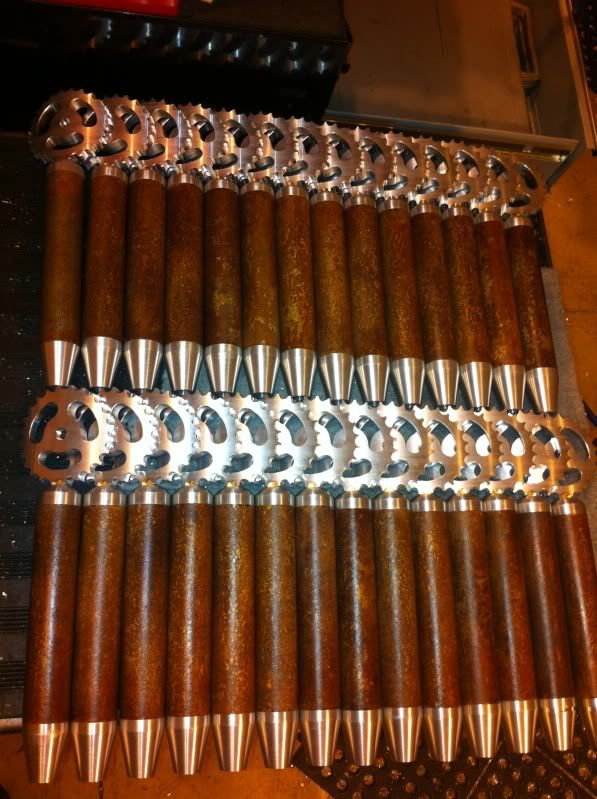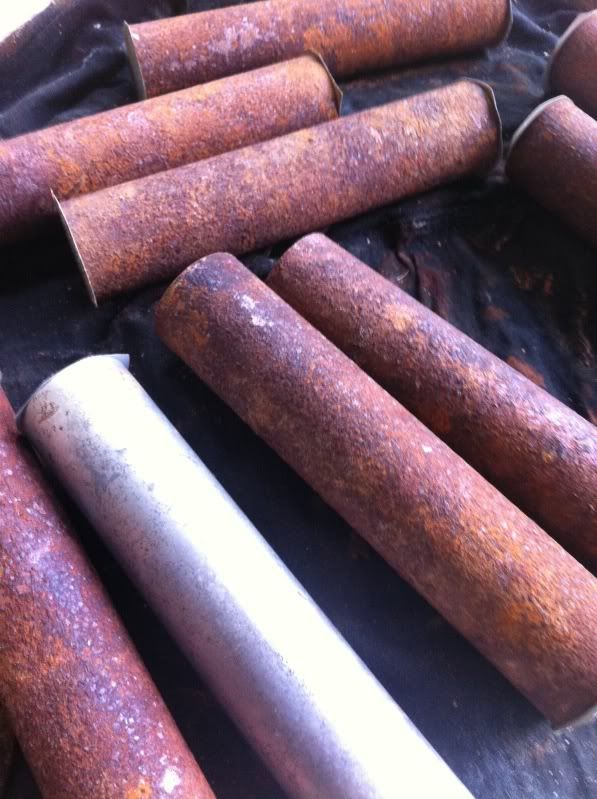Long Tom
Stainless
- Joined
- Aug 21, 2011
- Location
- Fiddlefart, Oregon
I'm on my third batch of beer tap handles for a local brewery. I do a rust patina on the shaft part, which is a standard steel DOM tubing, rinse carefully, dry, then clearcoat the heck out of them. Prior to all that I clean all the oils off the shafts with a mineral spirit bath and scrub. I'm using a patina formula I got here:
1 part salt
2 parts hydrogen peroxide
8 parts vinegar
It causes beautiful rust no problem. I can even get a very course, corroded look with several applications. The problem is, it will (mostly) wash right off very easily with water! I mean right down to bare shiny metal again.
The last batch I did, I made the mistake of trying to use that really corroded patina; I eventually got it to stick "good enough" that it didn't slough off under running water (mostly). I clearcoated it, but then a few weeks later, it started to flake off. I had to scrape them all down and re-clearcoat them. A real pain.
So right now I've got 20 shafts sitting out there looking like some pirate artifact from the deep sea! But if I even look at them funny, it will come off (mostly) leaving bare metal.
Any suggestions as to how to get it to stick better? Obviously, I'm getting some sort of a scale happening, with a boundary between the scale and the remaining metal. Baking soda? Spray with plain water? I tried heat... haven't tried cold. More time? Help!
1 part salt
2 parts hydrogen peroxide
8 parts vinegar
It causes beautiful rust no problem. I can even get a very course, corroded look with several applications. The problem is, it will (mostly) wash right off very easily with water! I mean right down to bare shiny metal again.
The last batch I did, I made the mistake of trying to use that really corroded patina; I eventually got it to stick "good enough" that it didn't slough off under running water (mostly). I clearcoated it, but then a few weeks later, it started to flake off. I had to scrape them all down and re-clearcoat them. A real pain.
So right now I've got 20 shafts sitting out there looking like some pirate artifact from the deep sea! But if I even look at them funny, it will come off (mostly) leaving bare metal.
Any suggestions as to how to get it to stick better? Obviously, I'm getting some sort of a scale happening, with a boundary between the scale and the remaining metal. Baking soda? Spray with plain water? I tried heat... haven't tried cold. More time? Help!






